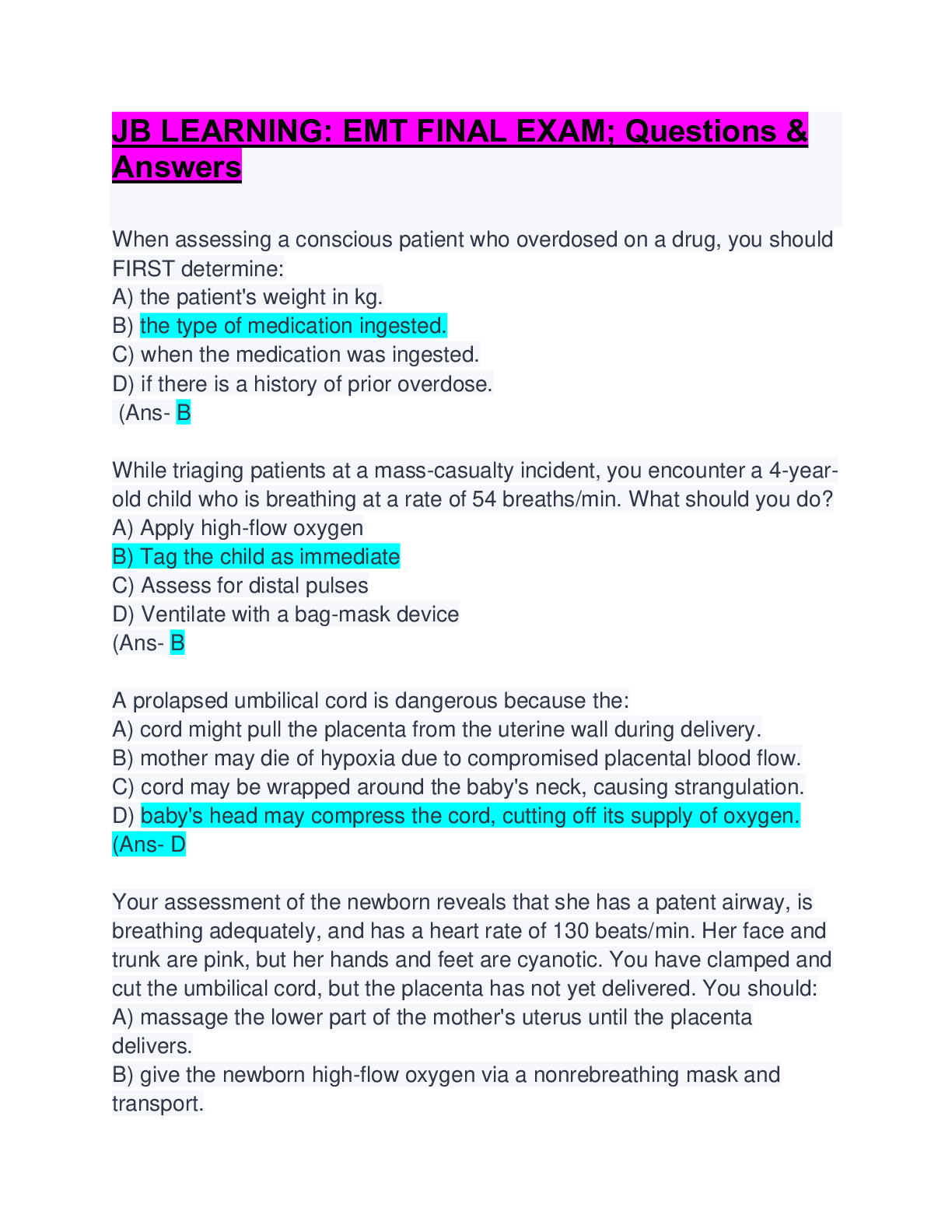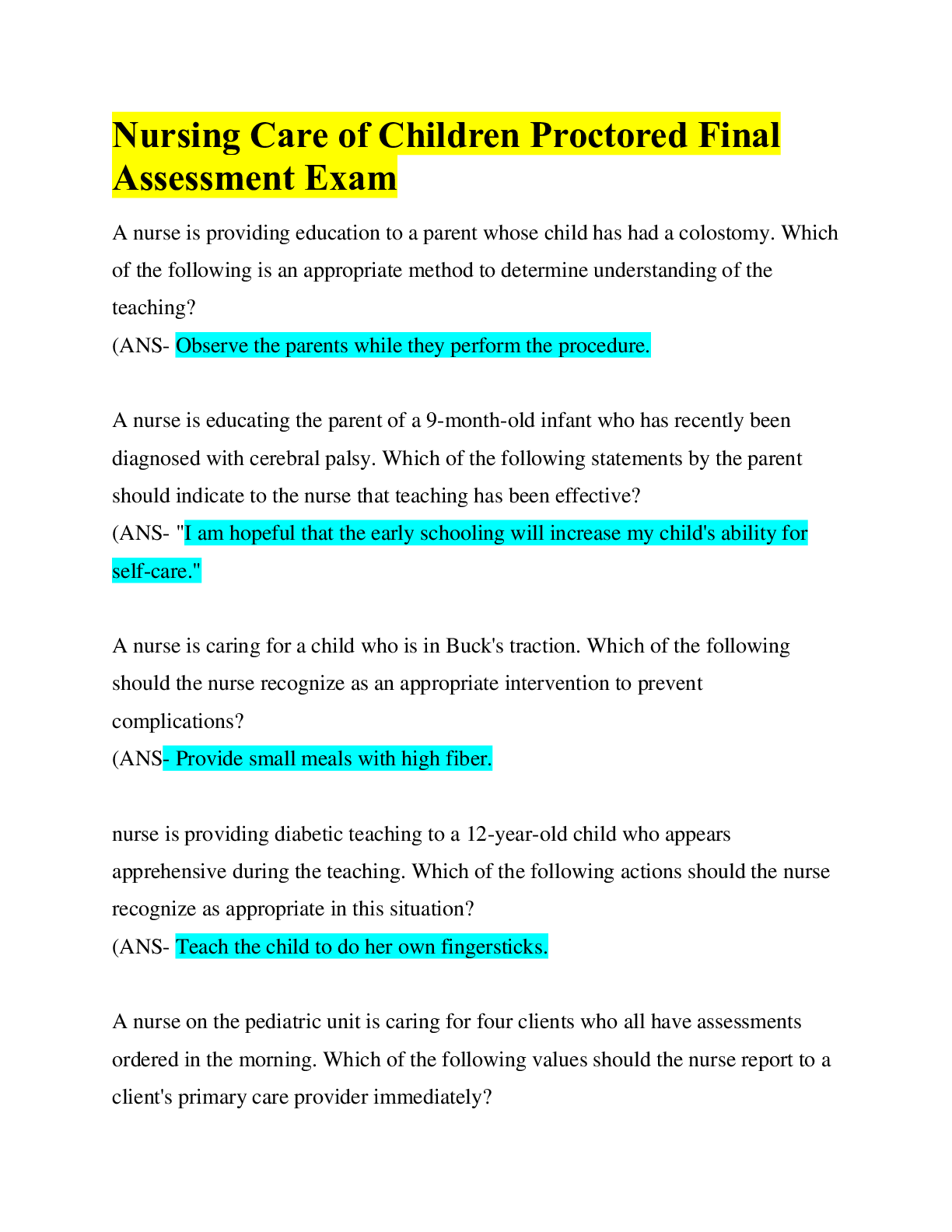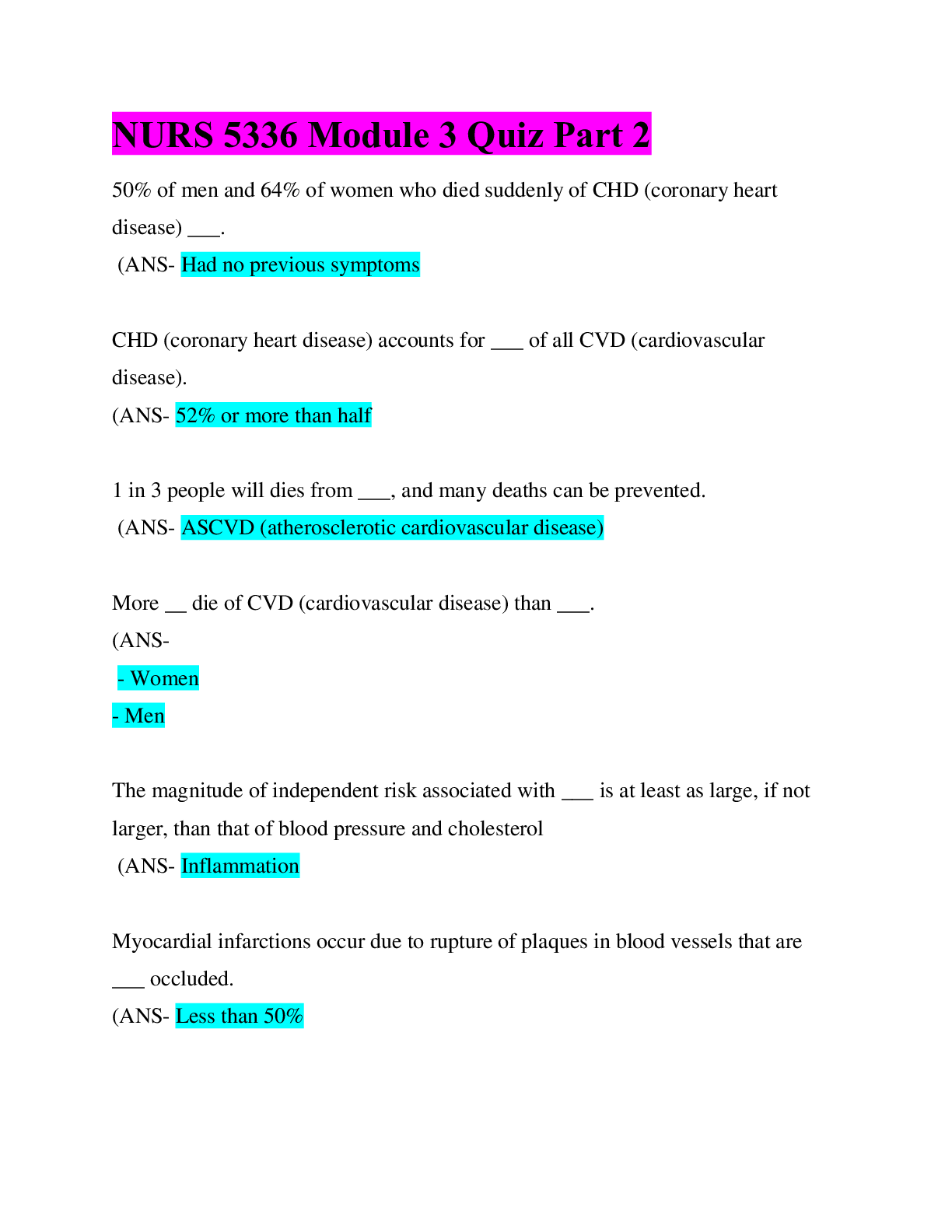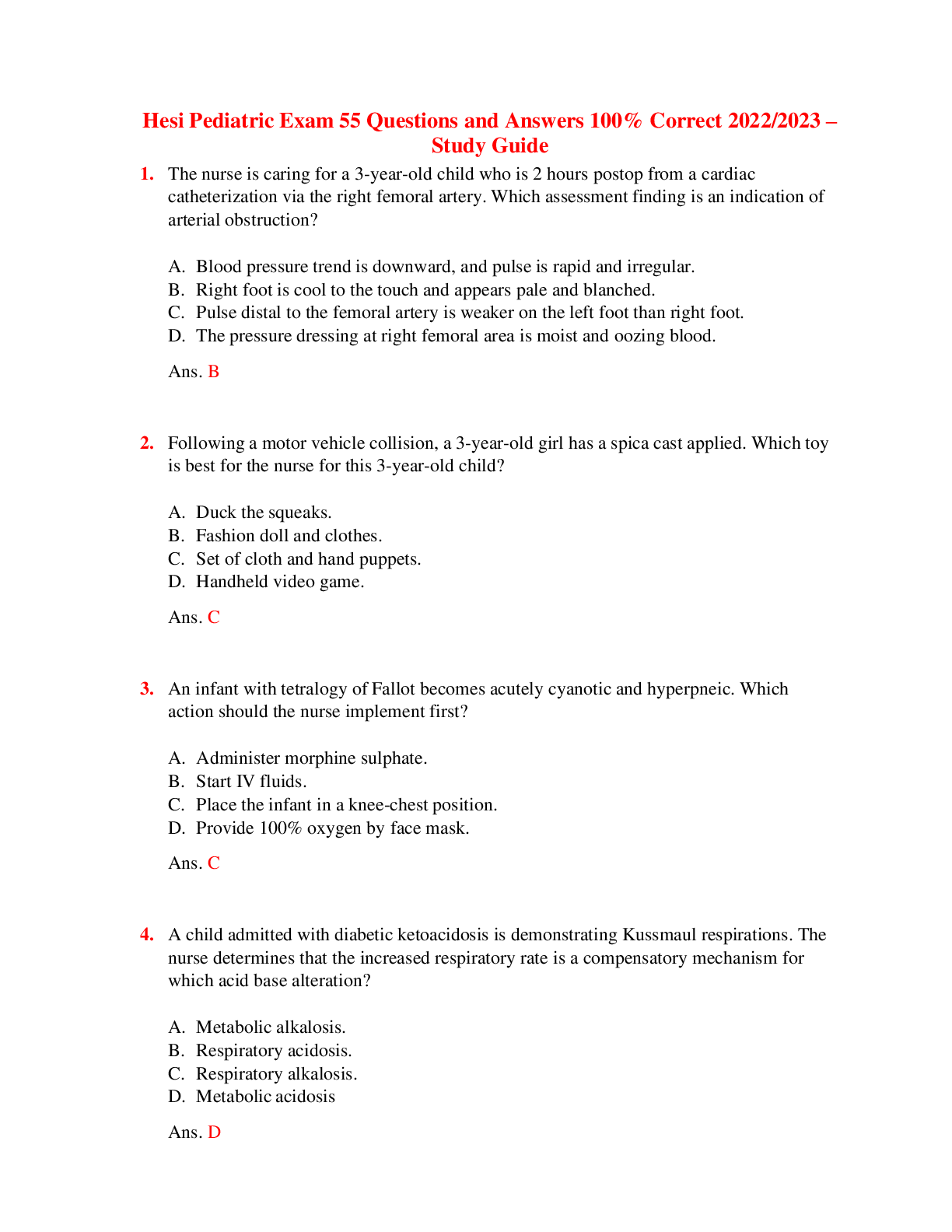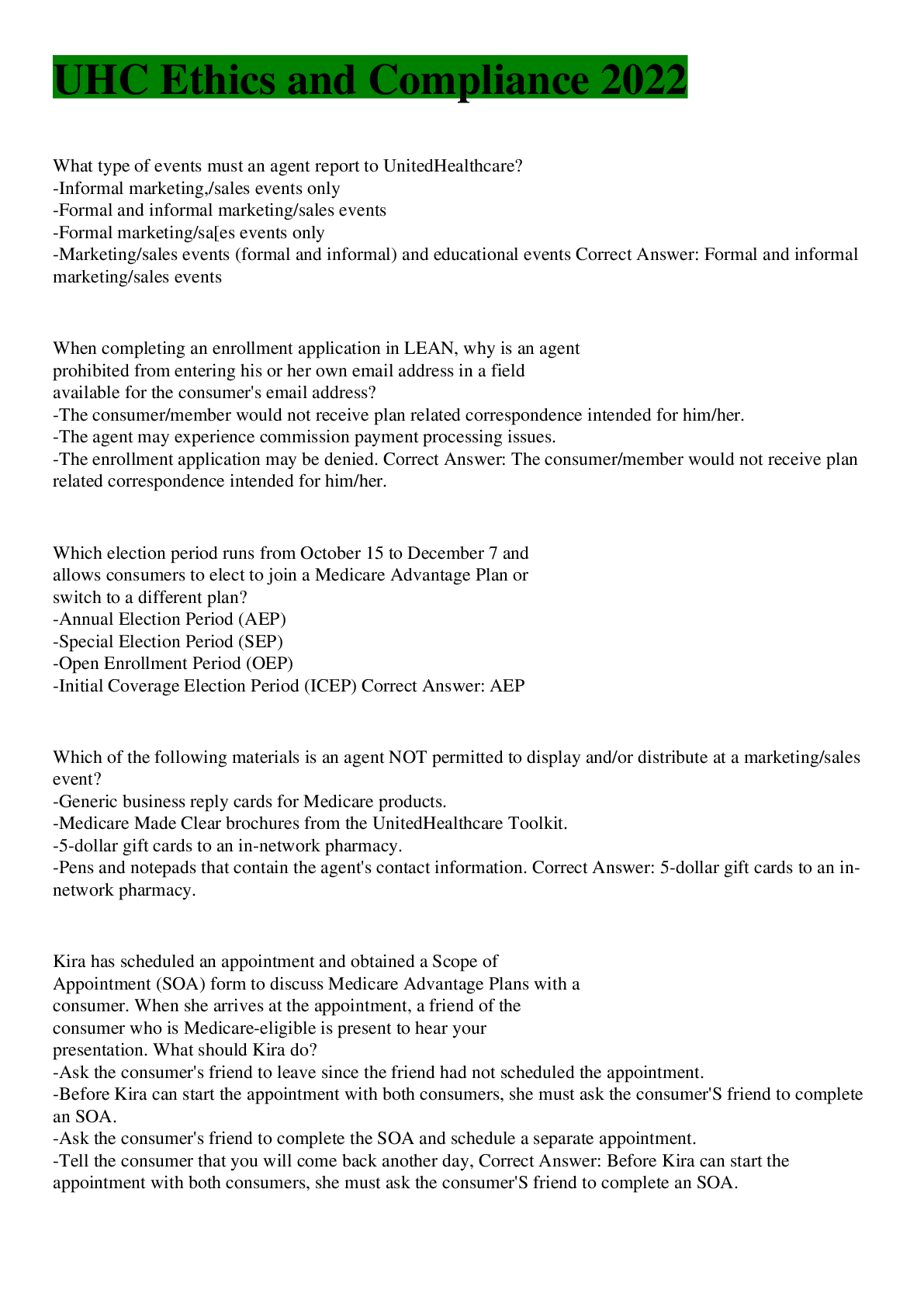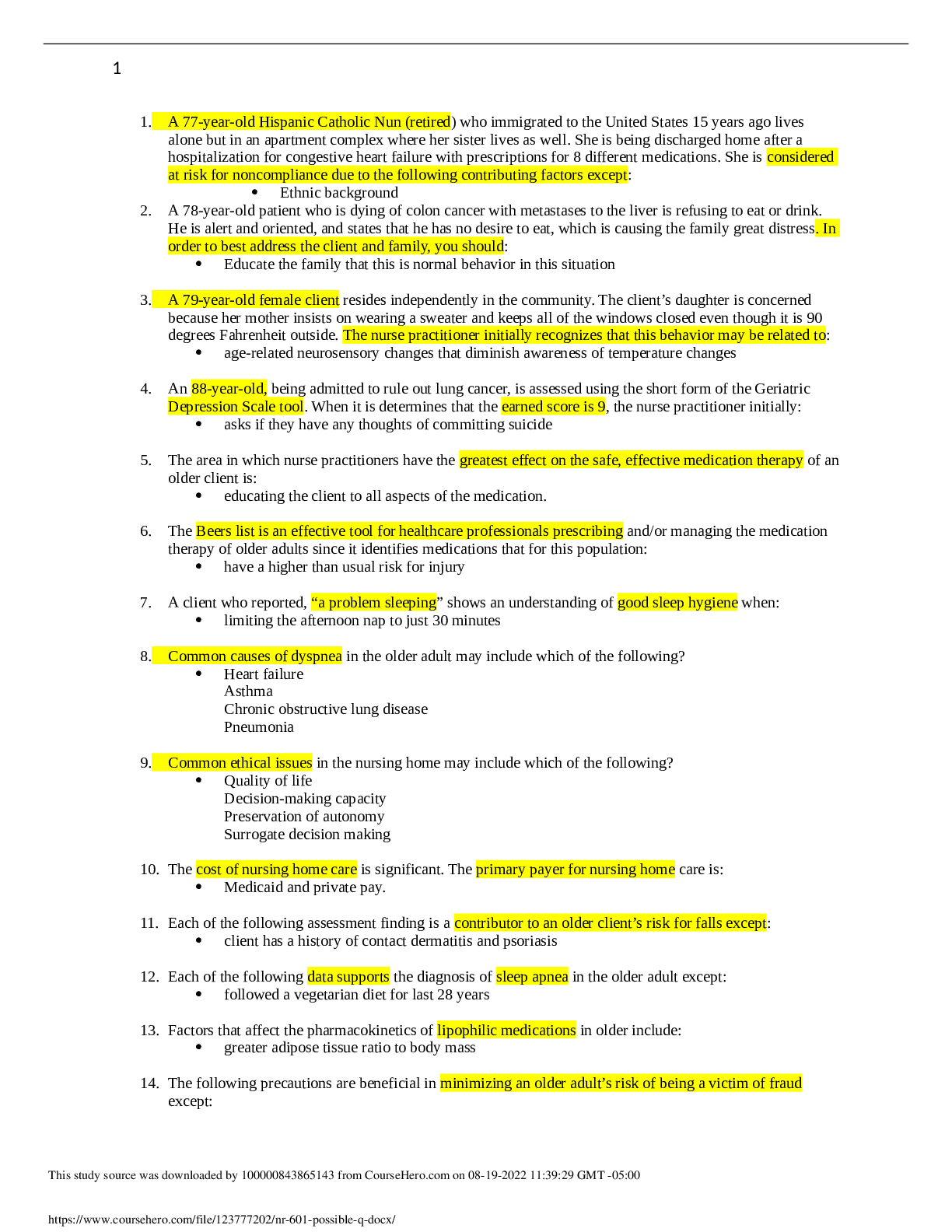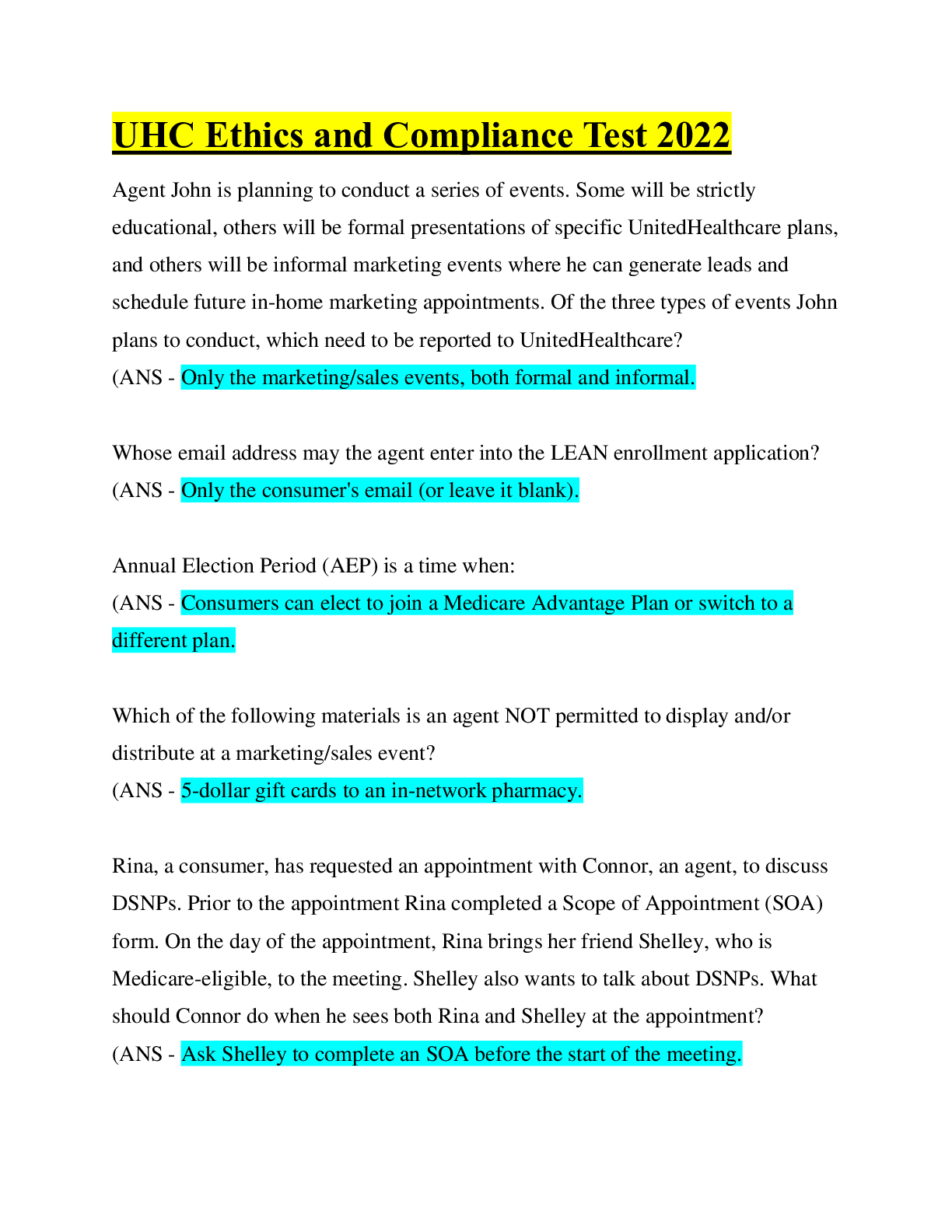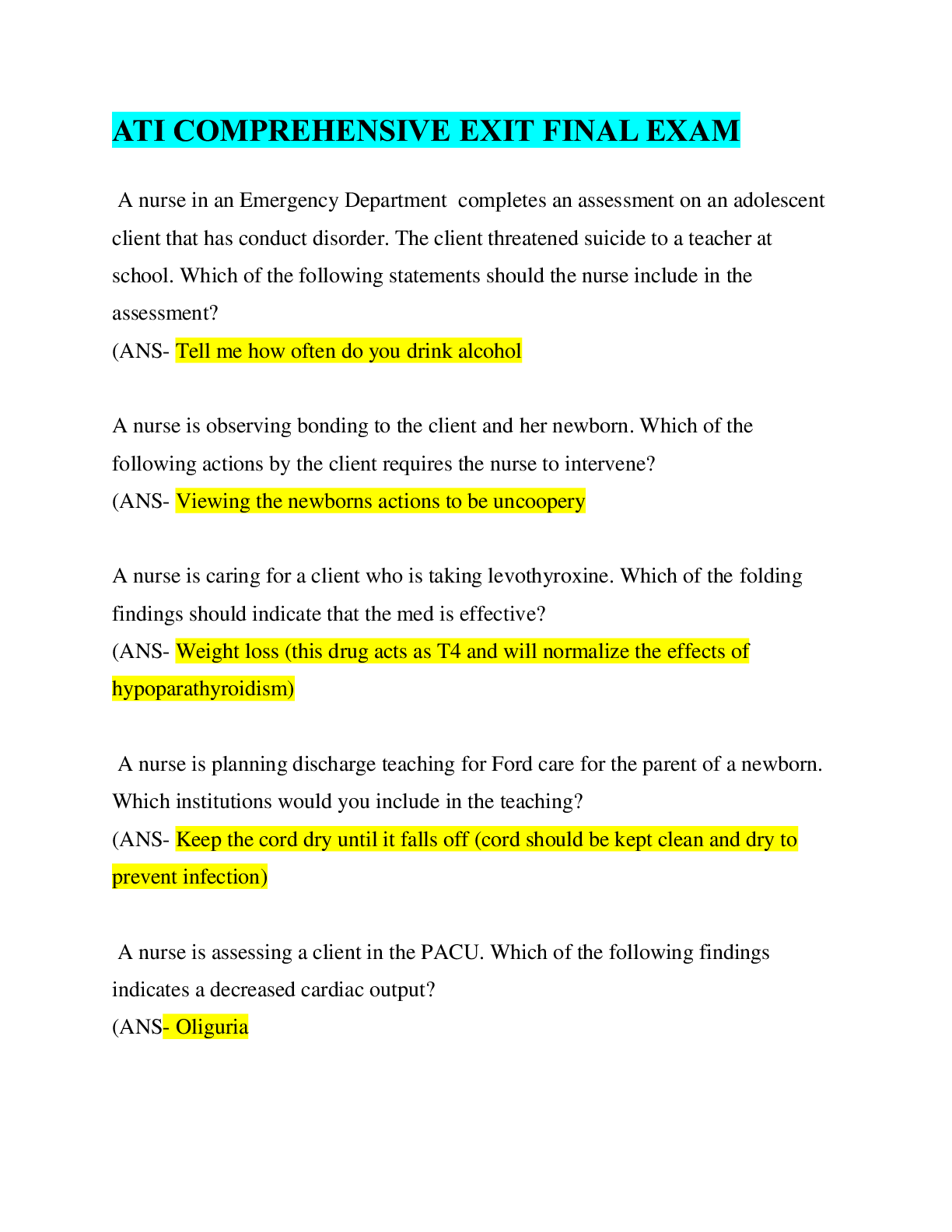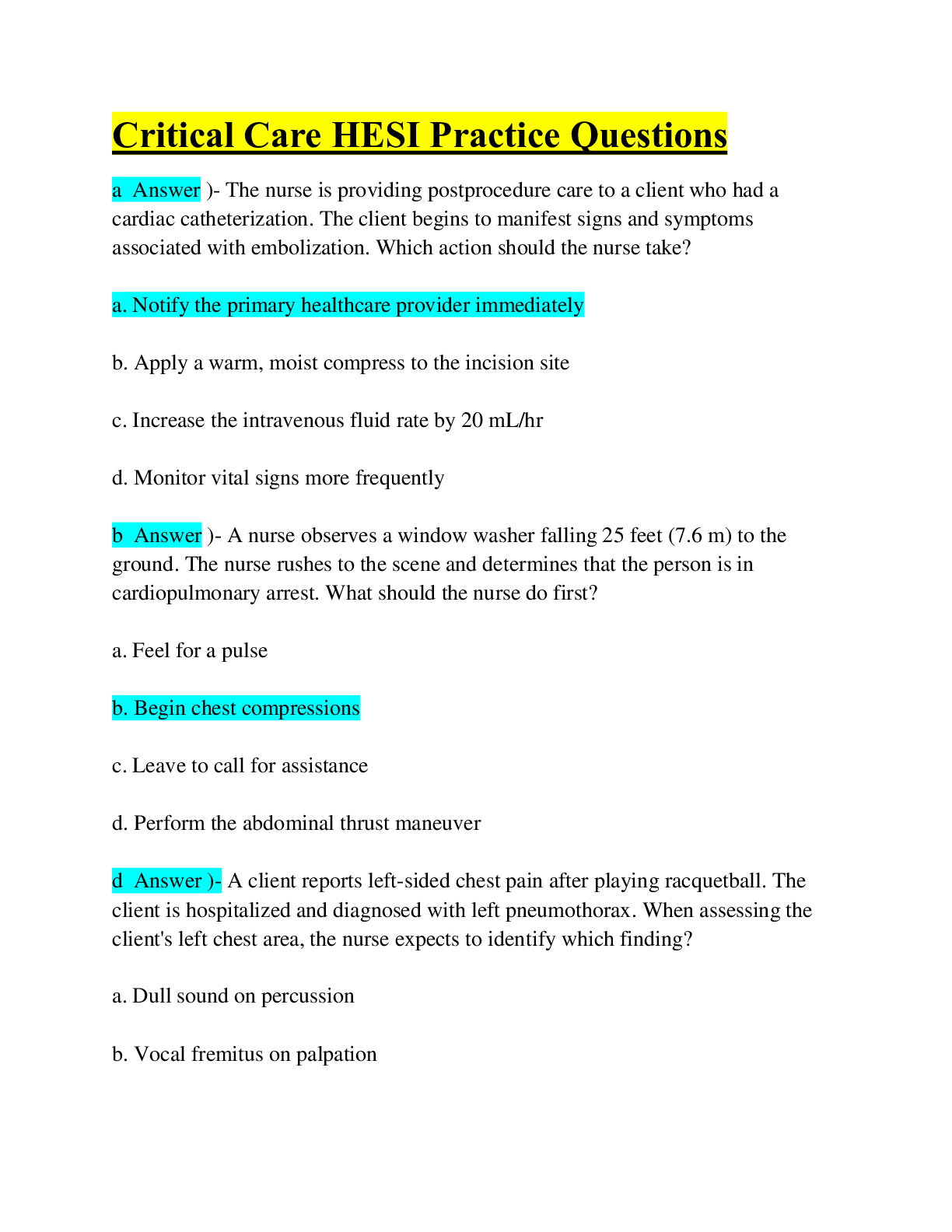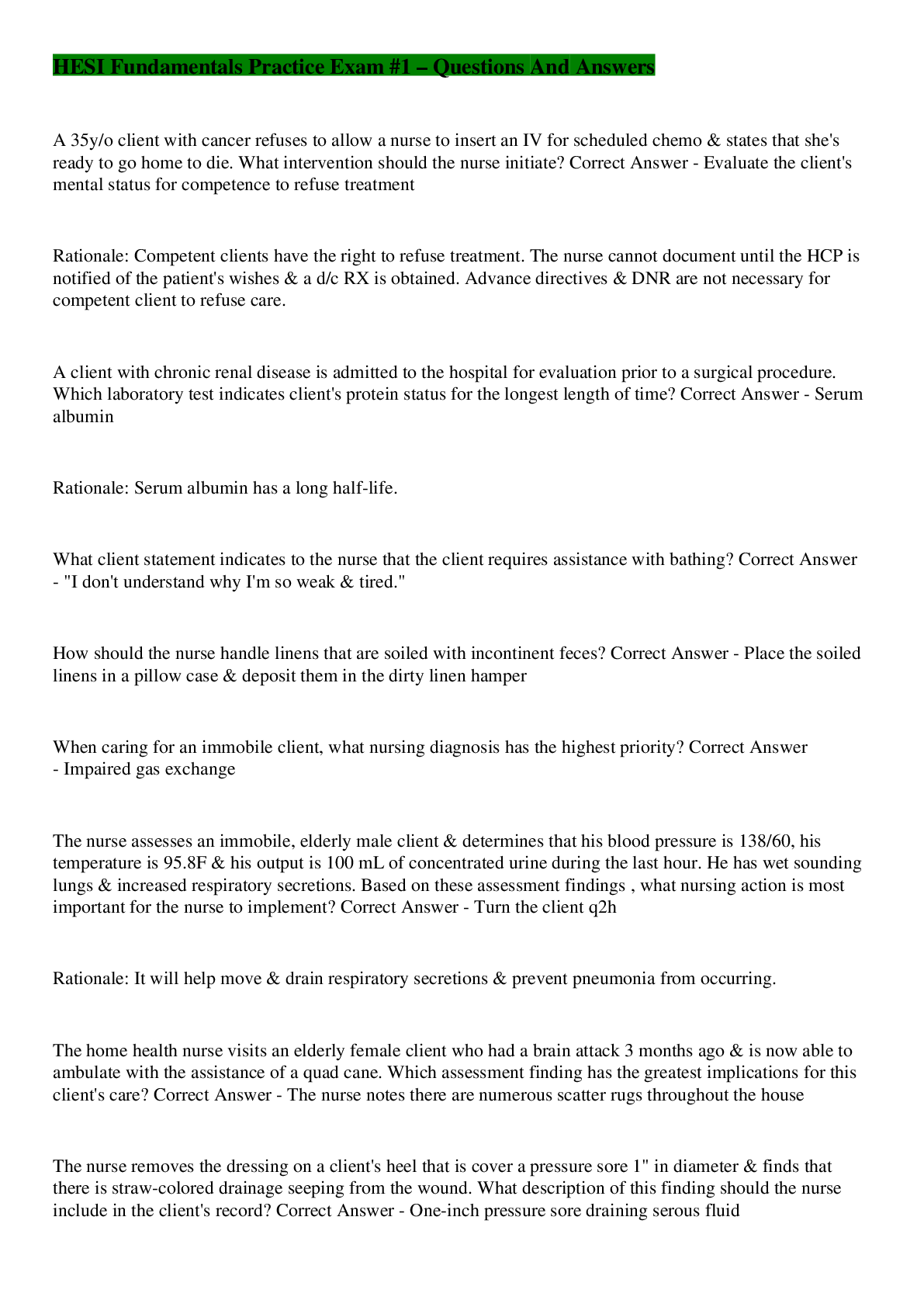Health Care > EXAM > EMT Final Exam JBL: Questions & Answers; Latest Updated: A+ Guide Solution (All)
EMT Final Exam JBL: Questions & Answers; Latest Updated: A+ Guide Solution
Document Content and Description Below
According to the USDOT, minimum staffing for BLS ambulance includes: (Ans - At least one EMT in the patient compartment. The driver does not need to be an EMT Which of the following statements reg... arding heatstroke is correct? (Ans - Heatstroke occurs when the body is exposed to more heat than it can eliminate and normal mechanisms such as sweating are overwhelmed. The temp can rise to appoint where tissues are destroyed. It can develop during prolonged vigorous physical activity or in closed, poorly ventilated, hot and humid space. High humidity impairs heat elimination via sweating. Patients will have hot, dry, flushed skin, become agitated, and LOC will decrease If a vehicle strikes a tree at 60 mph, the unrestrained driver would likely experience the MOST severe injuries during the: (Ans - Motor-vehicle crashes typically consist of three separate collisions. Understanding the events that occur during each collision will help you remain alert for certain types of injury patterns. During the first collision, the vehicle strikes another object. Damage to the car is perhaps the most dramatic part of the collision, but it does not directly affect patient care. It does, however, provide information about the severity of the collision; thus, it has an indirect effect on patient care. During the second collision, the passenger collides with the interior of the vehicle. Just like the obvious damage to the exterior of the car, the injuries that result are often dramatic and usually apparent during your primary assessment. During the third collision, the occupant's internal organs collide with the solid structures of the body. Although the injuries that occur during the third collision may not be as obvious as those that occur during the second collision, they are often the most life-threatening. A 22-year-old man had a strong acid chemical splashed into both of his eyes. He is conscious and alert, is experiencing intense pain, and states that he is wearing contact lenses. Treatment should include: (Ans - As a general rule, contact lenses should be left in place. Chemical eye burns are an exception to this rule. If left in place, the chemical could get behind the contact lens and continue to cause injury. Therefore, you should remove the contact lenses and immediately irrigate the eyes with sterile saline or water. If needed, continue to irrigate the eyes throughout transport. A 22-year-old male has a shard of glass impaled in his cheek. You look inside his mouth and see minor bleeding. The patient is conscious and alert with adequate breathing. You should: (Ans - It remains true that you should remove an impaled object if it compromises the airway or impedes your ability to manage the airway. However, neither is the case with this patient because he has an adequate airway. He is conscious and alert and has only minor bleeding in his mouth. The safest approach, and most practical given the situation, would be to carefully stabilize the shard of glass in place; consider wrapping the exposed glass with gauze to protect yourself from getting cut. Since the patient is conscious and alert and has only minor oral bleeding, it would not be unreasonable to hand him the suction catheter and allow him to use it as needed. Be sure to instruct the patient to use the suction and not to swallow any blood. Keep in mind that if you attempt to remove the shard of glass, you risk cutting yourself and causing further injury to the patient. When an error occurs while using the AED, it is MOST often the result of: (Ans - AEDs are highly sensitive and specific in recognizing shockable rhythms (eg, V-Fib, pulseless V-Tach); this means that they are highly reliable. It would be extremely rare for the AED to recommend a shock when one is not indicated or fail to recommend a shock when one is indicated. When an error does occur, it is usually the operator's fault. The most common error is not having a charged battery. To avoid this problem, many AEDs are equipped with an alarm that warns the operator if the battery is not fully charged. Some of the older AEDs, however, are not equipped with this feature. Therefore, it is important to check the AED daily, exercise the battery as often as the manufacturer recommends, and always have a spare, fully charged battery on hand. Prior to your arrival, a woman experiencing an asthma attack took two puffs from her prescribed inhaler without relief. After administering supplemental oxygen, you should: (Ans - Before assisting a patient with any medication other than oxygen, the EMT must ensure that the medication is prescribed to the patient and then obtain authorization from medical control. In this case, the physician probably will allow you to help the patient take one more puff from her inhaler. Generally, up to three puffs from an inhaler are delivered in the field. It is important for you to ask the patient how many puffs were taken from the inhaler before you arrived. The EMT must correct any airway and/or breathing problems as quickly as possible. After doing so, a secondary assessment can be performed. Upon discovering an open chest wound, you should: (Ans - Upon discovering an open chest wound (ie, sucking chest wound), you must take immediate action to prevent air from entering the wound. This is most effectively accomplished by applying an occlusive dressing or similar material to the wound. A porous (non-occlusive) trauma dressing will not prevent air from entering the wound. Tape three sides of the occlusive dressing and closely monitor the patient. If worsened respiratory distress and signs of shock are noted, a tension pneumothorax is probably developing, and you must release pressure from the pleural space by lifting up the unsecured portion of the occlusive dressing. Which of the following signs and symptoms are MOST characteristic of hyperglycemic ketoacidosis? (Ans - Hyperglycemic ketoacidosis (diabetic coma) is characterized by a dangerously high blood glucose level (hyperglycemia); slow onset; warm, dry skin (from dehydration); Kussmaul's respirations, which are deep and rapid; and breath with a fruity or acetone odor. Insulin shock results from a low blood glucose level (hypoglycemia) and is characterized by a rapid onset; altered mental status; and cool, clammy skin. You are assessing an elderly man with respiratory distress. He is coughing up bloody sputum and has an oxygen saturation of 85%. You auscultate his breath sounds and hear coarse crackles in all lung fields. This patient MOST likely has: [Show More]
Last updated: 1 year ago
Preview 1 out of 34 pages
Instant download
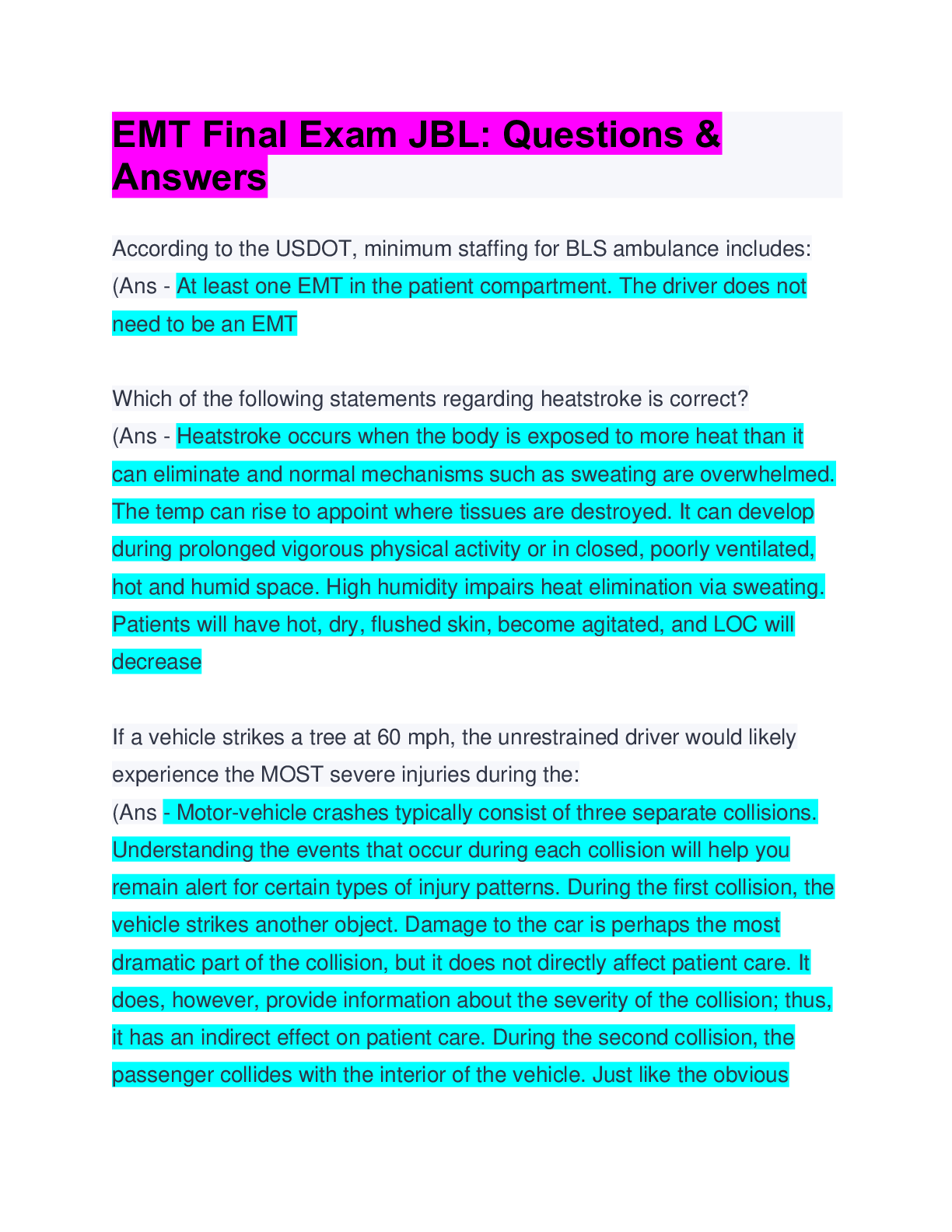
Buy this document to get the full access instantly
Instant Download Access after purchase
Add to cartInstant download
Reviews( 0 )
Document information
Connected school, study & course
About the document
Uploaded On
Nov 24, 2022
Number of pages
34
Written in
Additional information
This document has been written for:
Uploaded
Nov 24, 2022
Downloads
0
Views
57
